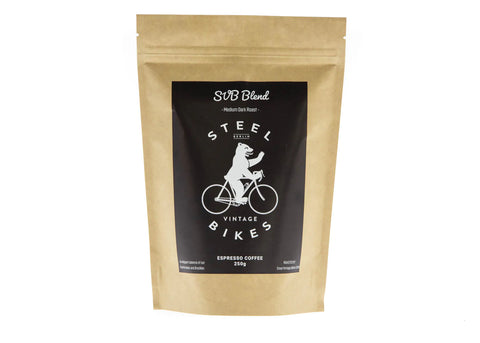Brazil
Brazil is the largest coffee-producing country in the world. The Cerrado region in the South West of the country dominates 21% of the country’s overall land mass and has the perfect weather conditions for coffee cultivation. Cerrado's climate is typical of the wetter savanna regions of the world, with a semi-humid tropical climate. The Cerrado is limited to two dominant seasons throughout the year, wet and dry. Annual temperatures for the region average between 22 and 27 °C and average precipitation between 800–2000 mm for over 90% of the area. The relatively flat topography of the Cerrado region makes it possible to utilize mechanical harvesting while also assuring some consistency of quality in choosing the optimal time to pick the coffee beans, which generally do not ripen all at once - different fruit ripens at different times over a period of one to four months. Typically, Brazilian coffee is grown on mountainside "fincas" (farms) at 400 to 1600 meters above sea level.
Grown in the Minas Gerais region at an altitude between 800-1200 meters above sea level
Variety: Bourbon, Mundo Novo, Red and Yellow Catuai, Topazio
Processed through a fully wet wash
Sweet, slightly nutty, with slight citric acidity, but a smooth and velvety body.
Congo
The mythical status of Congolese coffee correlates to the country of the Democratic Republic of Congo itself, and the fact that its people and landscape have fascinated storytellers and mythmakers for centuries. The country is filled with rich wonders of natural beauty. This outstanding area of natural wonder includes volcanoes, mountains of high elevation, and Lake Kivu, this diverse landscape combined with the rich and fertile soil creates the ideal conditions for unique beans. Our premium selection of Congolese beans are grown at an altitude of between 1,000 and 2,100 meters in Kivu which is located at the border of Uganda, Rwanda and Burundi, the Kivu area is unfortunately not only known for its spectacular cup profiles, as the area is subject to ongoing conflicts, cooperation between coffee farmers, Farm Africa and the Virunga National Park is encouraging peace through the growth of specialist coffee. The beans that they produce there are bursting with vibrant fruity aromas and have notes of pleasant acidity.
Grown at an altitude between 1000 - 2,100meters above sea level
Variety: Blue Mountain, Katwai, Rumangabo
Processing: Full Washed
Bursting with vibrant fruity aromas, with notes of pleasant acidity.
Guatemala
Guatemala is a fascinating country with a rich indigenous culture and stunning natural habitats. The most striking features of its landscape are the 37 volcanoes, several of them still being active. These volcanoes are not only attractive to travelers to discover but make up the distinct characters to be found in Guatemalan coffees. Set in the northwest, bordering Mexico, Huehuetenango has become one of the most well-known coffee-growing areas in the country. The name “Huehuetenango” stems from the historic Aztec language Nahuatl and translates into “place of the ancestors”. Elevation in this area reaches from 300 to 3850 meters, creating ideal micro-climate conditions for coffee cultivation. However, this coffee is only grown on the mountain slopes ranging from 1350 to 2000 meters, classifying this coffee for strictly hard bean (SHB) grade. Due to the high elevation, these beans grow slower than usual, but also develop a higher density, i.e. building a very hardcore. This is fostered through intense sun exposure during the day, while cold and moist winds cool down the area at night. Along with higher density comes a complex abundance of citric and fruitful aromas that let coffee from Huehuetenango rank as one of the best gourmet coffees in the world.
Grown in the Huehuetenango region at an altitude between 1,350 – 2000 meters above sea level
Variety: Caturra, Typica, Bourbon, Catuaí
Processed through a full wash
Winy acidity, dark berry notes, smooth and chocolate notes with a pleasant sweet profile.
Kenya
The total area under coffee cultivation in Kenya is estimated at 160,000 hectares. Plantations make up about one-third of the area. However, the largest part of the land is used by smallholder farmers who assign themselves to cooperatives. Normally the coffee is being sold via auctions that take place weekly during harvesting season. The pricing between buyer and seller is defined by the cup quality and the grading, which is mostly depending on the bean size. According to those factors the green coffee is generally classified in Kenya. Coffee beans that are screened above 15/16 are named „AB“ and are the second biggest of their kind. The add-on „Top“ or „Plus“ refers to the cup profile which is especially fine and complex. The combination of red volcanic soil, high altitudes and ideal climate has a decisive impact on the development of the aroma that characterizes this coffee. Due to the geographical location on the equator, there is only little distinction between the different seasons in Kenya. Like this, the harvest takes place several times per year compared to other coffee-producing countries. The well-known region Nyeri in the heart of the central highlands is located between the western outskirts of Mount Kenya and the eastern end of the Great Rift Valley and is famous for producing the best coffees of the country. All coffees are wet-processed and dried under the African sun on so-called “African Beds” down to approx. 12% once the fermentation is done.
Grown in the Nyeri region at an altitude between 1,600 – 2,000 meters above sea level
Variety: SL 28 & SL 34
Processed through a full wash
Pronounced citrus-like acidity, strong body, notes of grapefruit and pomegranate, blackcurrant.
SVB Blend
Here at Steel Vintage Bikes, we take pride in our coffee, we see the practise of roasting coffee as an art-form. Our expert roaster has created a dark medium roast that is an eloquent blend of our tropical Guatemalan and Brazilan beans. The blend has a cup profile that has a sweet yet winy acidity flavour and is bursting with dark berry notes with a gentle hint of citrus.
Originates from Guatemala & Brazil at an altitude between 800 – 2,100 meters above sea level
Variety: Caturra, Typica, Bourbon, Topazio
Processed through a fine wash
A sweet yet winey acidity flavour and is bursting with dark berry notes with a gentle hint of citrus.














